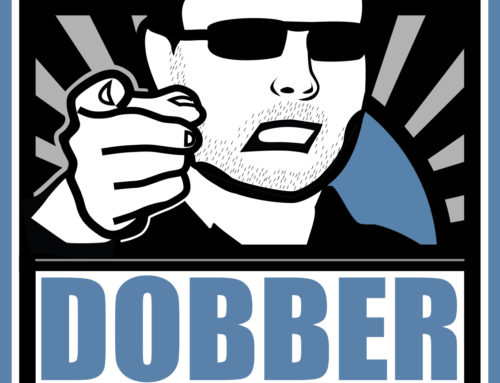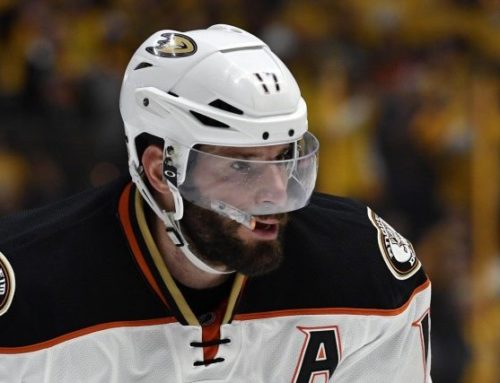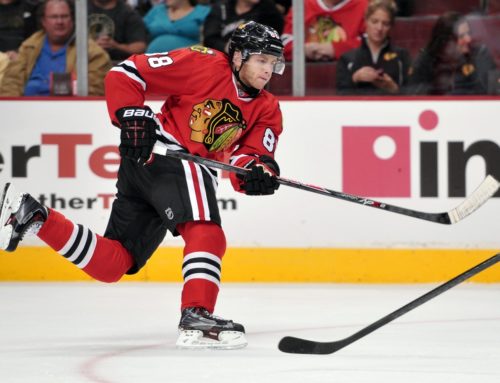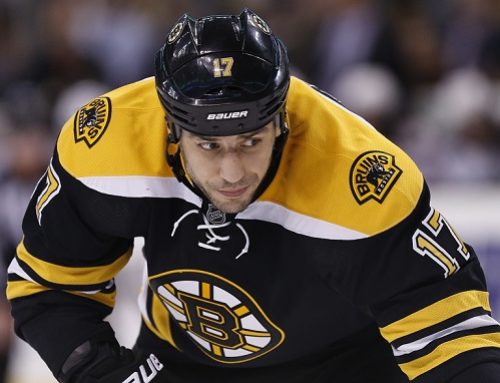
The number two ranked forward may not have the experience and history that most on this list have accrued, but much like Rick, he’s slick and can’t miss.
2.Steven Stamkos – Change a couple of letters in his last name and you’ve got an accurate description – Steven Studly is just that. Coming off of a rough, yet typical rookie season in the NHL, Stamkos exploded for 51 and 45 goals respectively, in the following two seasons. Currently on pace for 55 goals, a quick look at the top 10 scorers in the NHL for the past two and a half seasons displays Stamkos’ innate ability.
Not only has Stamkos scored the most goals, but he’s done so by a massive 26-goal margin. That’s a full season of goals for a lot of scorers in the NHL. There have been other junior snipers who have stepped into the NHL and produced well, notably John Tavares, Patrick Kane and Zach Parise, whose shooting game either hasn’t caught up, translated to the NHL, or took a few more years before the 40+ goal seasons arrived. What makes Stamkos so exceptional is his prowess for scoring at such an early age, one we haven’t seen since phenom Alex Ovechkin posted 52 goals in his rookie season. Goals is the toughest to fill and most valuable category in multi-cat leagues which gives goal scorers a boost in value over the opposition. But, can Stamkos hang on to his title as best goal-scorer in the league as the players who have made him into the player he is begin to age and start losing their touch?
One giant question mark hanging over Stamkos’ head is how much of his production is tied to play-making superstar Martin St. Louis. Using Frozen Pool’s "Line Combination" tool, we can see a major swing in who Stamkos is producing on a line with between this season and last.
In 2010-11, 82 of his 91 points came with St. Louis on the ice. That translates to about 90% which is a clear statement that St. Louis plays a large role in Stamkos’ success. This year, conversely, St. Louis has been on the ice a lot less with Stammer, only for about 58% of his production. This is fantastic news for Stamkos owners as the argument has been made that he could struggle once St. Louis sees a downturn in his game, which isn’t too far off for the 34 year old.
Establishing his game early, before St. Louis is gone for good, is a bold but fantastic move by Tampa Bay. One could question why you would split up something made out of magic, but the reward will be big as Stamkos will now be able to comfortably slide into an environment without his favorite set-up man. Management, fans and poolies alike can rejoice in the fact that 15.38% of his even-strength production this year has come with Ryan Malone and Teddy Purcell – identical to the 15.38% he has seen with St. Louis and Lecavalier. Disaster averted, but the problem isn’t completely solved.
While he’s proven to be able to produce with other linemates, having two strong lines creates and issue when the opposition tries to match up their shut down lines against Tampa’s most productive players. Playing your top shut-down unit against a Stamko’s led line, or a St. Louis one isn’t an easy decision. Tampa has the ability to play mismatches and is going to need players such as Carter Ashton and Vladislav Namestinikov to play big roles in the future, in order to make the current success carry on. As long as they have the players to make the transition at the right time, Stamkos should have no problem continuing to produce as an elite player.
Now, there are a few high-level fantasy producers who make a good chunk less than Stamkos. Hank Sedin, Jon Toews, Pat Kane, Pavel Datsyuk and Henrik Zetterberg, just to name a few. What is it that justifies fitting Stamkos’ $7.5 million cap hit into your roster while these other, cheaper players are available? His goal-scoring ability alone is a pretty good argument, but I don’t know if that is enough to give him the edge. Let’s compare his points and peripheral stats to those we’ve already looked and to see if he compares to the elite. Due to his age, I will compare the last two and half seasons rather than the last five, again, any season under 65 games considers pace.
|
Player |
Goals |
Assists |
Points |
SOG |
PPP |
PIM |
|
Eric Staal |
26 |
41 |
68 |
283 |
23 |
60 |
|
Rick Nash |
31 |
31 |
62 |
293 |
17 |
46 |
|
Alex Ovechkin |
39 |
48 |
87 |
343 |
28 |
57 |
|
Evgeni Malkin |
34 |
49 |
84 |
324 |
29 |
65 |
|
Daniel Sedin |
38 |
62 |
100 |
279 |
34 |
43 |
|
Steven Stamkos |
50 |
41 |
91 |
284
📢 advertisement:
|
32 |
62 |
*Due to excessive amounts of games missed, Sidney Crosby is not included on this list. Numbers could be very skewed with only 8 games this year and 41 last.
As the table shows, Stamkos is productive in every category. He falls into the lower range of assist but that’s the easiest category to fill with all the secondary assists handed out in the NHL. Thanks to his thus-far healthy NHL career, Stamkos is also ahead Malkin in terms of average points and a whole four points better than Ovechkin, with Alex’s current fall from elite production.
With the knowledge that Stamkos has stacked up just fine against his biggest opposition for the fantasy crown in terms of pure multi-cat production, how much does his salary come into play? There is wide range in comparison to the above players, anywhere from $2 million in savings to an extra bill of $1.4 million, so where does his production/cost ratio fit in with his adversaries? Once again the same two and a half season time period will be considered.
|
Player |
Cost per goal avg |
Cost per assist avg |
Cost per point avg |
Cost per SOG avg |
Cost per PPP avg |
Cost per PIM avg |
|
Eric Staal |
$317,308 |
$201,219 |
$121,324 |
$29,152 |
$358,695 |
$137,500 |
|
Rick Nash |
$251,612 |
$251,612 |
$125,826 |
$26,621 |
$458,823 |
$169,564 |
|
Alex Ovechkin |
$244,576 |
$198,717 |
$109,637 |
$27,809 |
$340,659 |
$167,341 |
|
Evgeni Malkin |
$255,882 |
$177,551 |
$103,571 |
$26,851 |
$300,000 |
$133,846 |
|
Daniel Sedin |
$160,526 |
$98,387 |
$61,000 |
$21,864 |
$179,412 |
$141,860 |
|
Steven Stamkos |
$150,000 |
$182,926 |
$82,416 |
$26,408 |
$234,375 |
$120,968 |
The most cost effective category is highlighted in bold. Daniel Sedin fortifies his position at number one while Stamkos shines in the goal-scoring department and is surprisingly very efficient in the penalty minute department as well. If Crosby were healthy I have no doubt that his numbers would at least challenge the top two in their respective winning categories, but his numbers over the past season and a half (current) are far too skewed to accurately depict in a table.
It’s the goal scoring that puts Stamkos on a pedestal. Even at $1.4 million more than D. Sedin he manages to be more cost effective in that department. It’s the difficulty in finding top goal scorers for a decent cap-hit as well as one’s that are consistent – not like your Milan Hejduk or Jonathan Cheechoo who have one huge season just to plummet back to earth on Ben Affleck’s back.
Stamkos is a pure sniper and is as likely as any player to remain above the 40 goals mark, and I’d be betting on 45+. As his all-around games continues to develop his assist totals should inflate and there’s no reason to think his peripheral stats won’t only fluctuate ever so slightly, in either direction, year-to-year. As of right now, Stamkos is hands-down the number two forward to own in a salary cap league, but don’t go trading for him – if his owner’s know anything it’s not to move him for anything less than an arm and your favorite organ.






 BUF
BUF NYR
NYR CHI
CHI WSH
WSH CBJ
CBJ S.J
S.J VAN
VAN PIT
PIT ANA
ANA
